Best Gem Mining Locations in Florida: A Fun and Unique Experience for All Ages
Believe it or not, Florida is home to some of the best gem mining spots in the country. From digging for rare crystals to hunting for gemstones and fossils, there’s something for everyone in the Sunshine State.
If you’re a rockhound or just looking for a fun family activity, Florida has it all. With over 20 gem mining locations to choose from, you’re sure to find treasures that will make your trip worthwhile. Whether you’re searching for agatized coral, aragonite, dolomite, or other gems, the thrill of discovery is part of the excitement. So, grab your pickaxe and head to one of Florida’s gem mining sites for an adventure you won’t forget.
History of Gem Mining in Florida
Gem mining has a long and fascinating history in Florida, dating back to the time of Native Americans. The abundant natural resources in the state, including minerals, fossils, and calcite, have made it a prime location for gem enthusiasts.
Native American Influence
Florida’s Native American tribes were the first to discover the state’s rich gem deposits. They used the minerals and fossils they found for various purposes, including crafting tools and jewelry. One of the most notable gems found by Native Americans was the Megalodon tooth, which can still be found today in the Peace River.
Historical Mining Sites
In the 1800s, the discovery of phosphate deposits in Florida led to a mining boom. However, it wasn’t until the 20th century that gem mining became a popular activity in the state. One of the most famous lost mines in Florida is the Lost Mines of Atlantis, which is said to contain vast amounts of precious gems and minerals.
Today, there are numerous gem mining sites throughout Florida that offer visitors the chance to discover their own treasures. Some of the most popular locations include the Peace River, where you can find Megalodon teeth and other fossils, and the Emerald Coast, which is home to a variety of gems including emeralds and sapphires.
Types of Gems Found in Florida
The state of Florida has a diverse geology, which means that there are many different types of gems that can be found. Here are the most common types of gems that can be found:
Calcite and Quartz Varieties
Calcite and quartz are two of the most common types of gems that can be found in Florida. Calcite is a mineral that is often found in limestone, and it can come in a variety of colors including white, yellow, and orange. Quartz is another mineral that is commonly found in Florida, and it can come in a variety of colors including clear, pink, and purple.
Some of the most popular types of calcite and quartz varieties that can be found in Florida include:
Agate:
Agate is a type of chalcedony quartz that forms in concentric layers, creating distinctive and often colorful bands. It comes in various colors and patterns, and its name is derived from the Achetes River in Sicily where it was first discovered. Agate is known for its calming energy and is often used for jewelry and ornamental purposes.
Amethyst:
Amethyst is a purple variety of quartz and is one of the most popular gemstones. The color ranges from pale lilac to deep purple. Amethyst is associated with spiritual growth, wisdom, and sobriety. It has been used in jewelry for centuries and is often cut into various shapes for rings, necklaces, and earrings.
Chalcedony:
Chalcedony is a microcrystalline form of quartz, and it comes in various colors, including blue, pink, white, and gray. Agate and carnelian are varieties of chalcedony. Chalcedony is known for its smooth texture and waxy luster. It has been used throughout history for carvings, cameos, and jewelry.
Citrine:
Citrine is a variety of quartz with a yellow to orange color. It is often referred to as the “merchant’s stone” due to its historical use in attracting wealth and prosperity. Citrine is associated with positive energy and is commonly used in jewelry settings.
Kyanite:
Kyanite is a typically blue or bluish-green mineral that is valued for its unique crystal formations. It is an aluminum silicate and is often used in the production of high-temperature ceramics. In the gemstone world, kyanite is appreciated for its rich blue hues and is used in jewelry, particularly in rings and necklaces.
Pyrite:
Pyrite, also known as “fool’s gold,” is a sulfide mineral with a brassy yellow color. It often forms cubic crystals and has a metallic luster. While not a precious gemstone, pyrite is valued for its striking appearance and is sometimes used in jewelry or as a decorative element.
Zircon:
Zircon is a mineral that comes in a variety of colors, including blue, yellow, brown, green, and red. Colorless zircon is known for its brilliance and fire, making it a popular substitute for diamond in jewelry. Zircon is a naturally occurring gemstone, and its name comes from the Persian word “zargun,” meaning “gold-colored.”
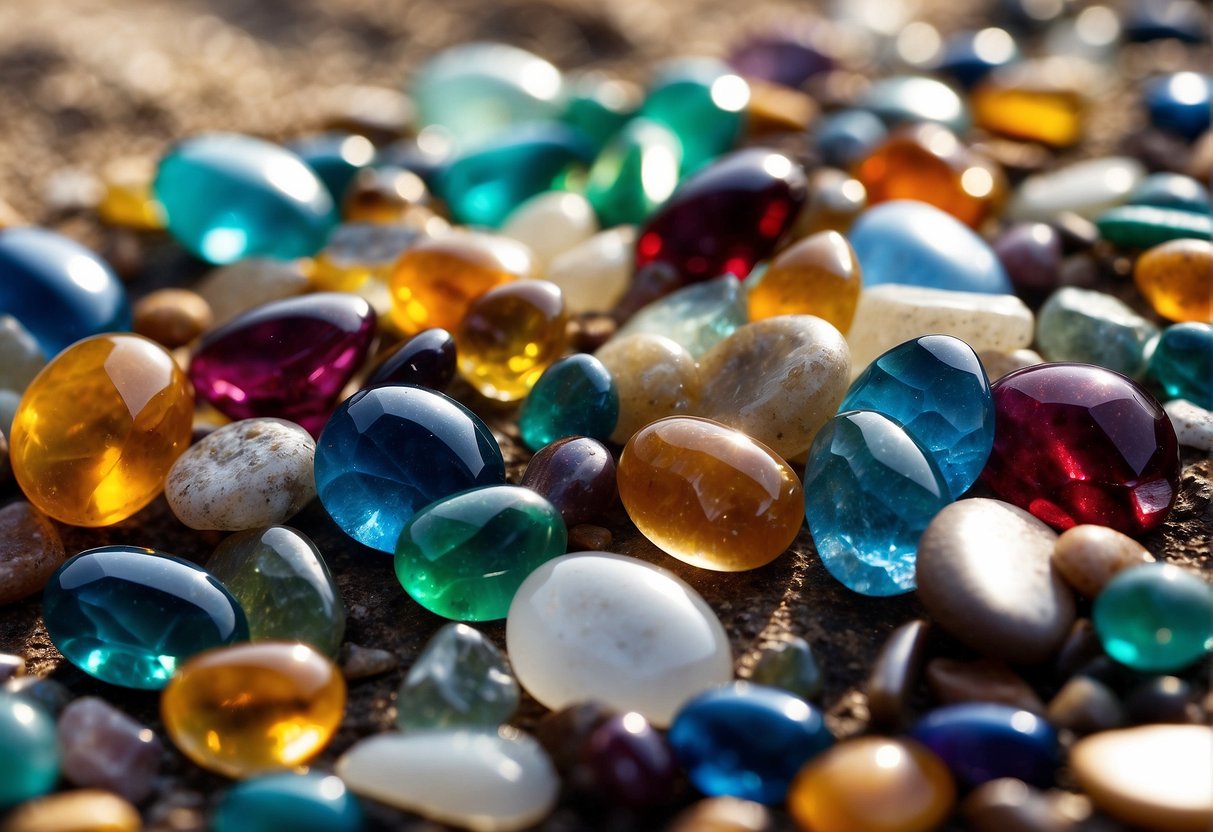
Rare Gemstones Native to Florida
In addition to calcite and quartz varieties, there are also several rare gemstones that are native to Florida. These gemstones are often found in specific locations throughout the state, and they can be quite valuable.
Some of the most rare gemstones that can be found in Florida include:
Moonstone:
Moonstone is a feldspar mineral that exhibits a unique phenomenon called adularescence. This ethereal glow appears as a soft play of light across the surface, reminiscent of moonlight. Moonstone comes in a range of colors, including white, peach, and blue. It is associated with feminine energy, intuition, and has been used in jewelry for its captivating and mystical appearance.
Agatized Coral:
Agatized coral is fossilized coral that has undergone a process of replacement by silica-rich agate. The result is a unique gemstone that preserves the intricate structures of ancient coral, often displaying vibrant colors and patterns. Agatized coral is valued for its fossilized beauty and is sometimes used in jewelry and ornamental pieces.
Chalcedony Stalactites:
Chalcedony stalactites are formations of the mineral chalcedony that occur in caves or other environments where dripping water deposits layers of silica. Over time, these deposits can create beautiful stalactite formations. Chalcedony stalactites can exhibit various colors, patterns, and translucency. While not as well-known as some other gemstones, they are appreciated for their unique and natural beauty.
Best Gem Mining Locations
Peace River (Arcadia)
If you’re looking for a fun-filled adventure while gem mining in Florida, Peace River in Arcadia is a great place to start. This river is known for its abundance of fossilized shark teeth, which can be found scattered throughout the riverbed.
To get started, you can rent a canoe or kayak from the Canoe Outpost and paddle down the river while keeping your eyes peeled for any treasures. Alternatively, you can also wade through the shallow waters and sift through the sand with a screen.
Some of the most commonly found fossils include shark teeth, dugong bones, and even mammoth teeth! You can also find a variety of colorful stones and gems, including agate, calcite, and quartz.
It’s important to note that while gem mining in Peace River is legal, there are some rules and regulations in place to protect the environment and ensure everyone’s safety. For example, you cannot use heavy equipment or dredging tools, and you must obtain a permit if you plan on using a screen larger than ¼ inch.
Venice Beach (Venice)

Venice Beach is known for its abundance of shark teeth, which are actually fossilized teeth from prehistoric sharks that lived in the area millions of years ago. This is actually where we went to look for shark teeth near Siesta Key in our Sarasota vacation. You can find them by sifting through the sand or walking along the water’s edge.
To make the most of your gem mining experience, it’s recommended to bring a sifter or purchase one from a local shop. You can also rent a sifter from the Venice Beach area, which can be a convenient option if you’re traveling light.
In addition to shark teeth, you may also be able to find other fossilized treasures such as shells and coral. Keep in mind that it’s important to respect the environment and not disturb any wildlife or protected areas.
If you’re interested in learning more about the history and geology of the area, there are also guided tours available that can provide a deeper insight into the fascinating world of gem mining.
Capitola Fossil Park (Capitola)
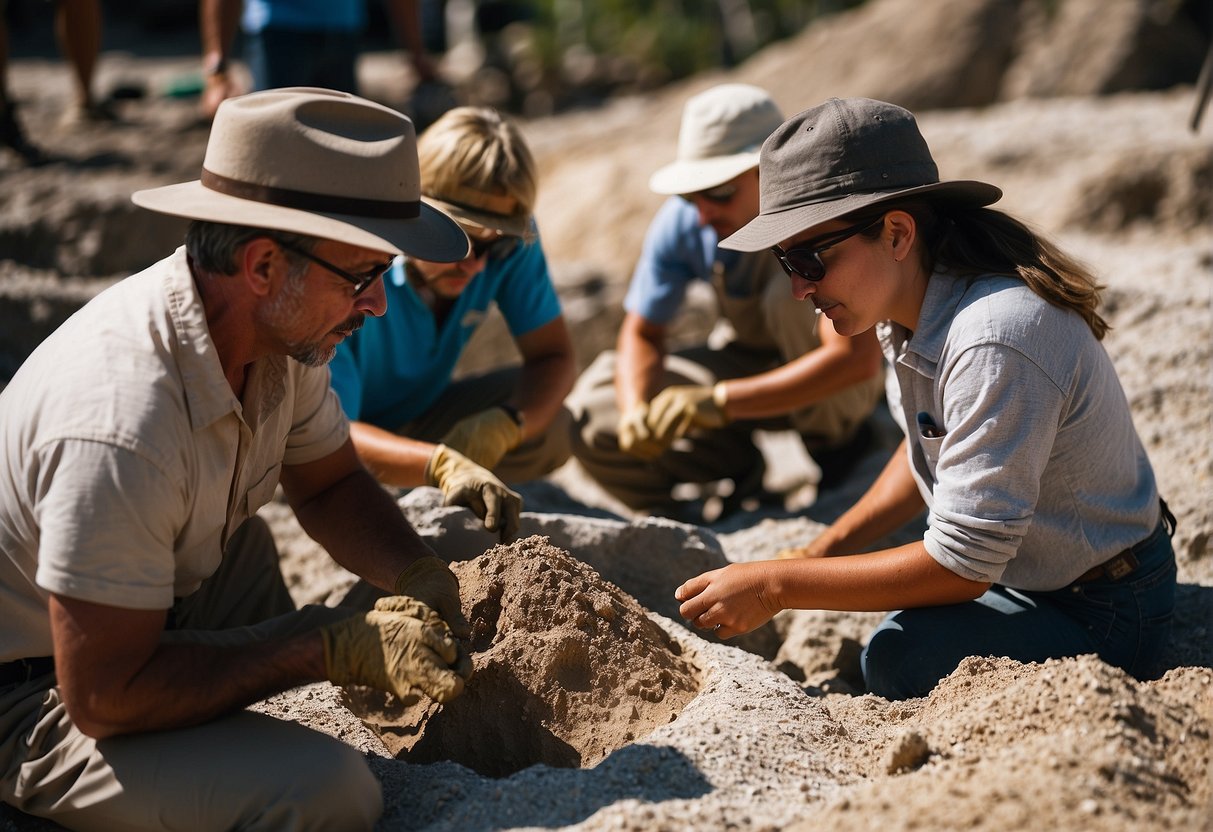
Capitola Fossil Park is a must-visit location in Florida for fossil hunting. Located in the small town of Capitola, this park is home to a variety of marine fossils, including shark teeth, shells, and coral.
To start your fossil hunting adventure, you’ll need a few essential tools, including a shovel, a sifter, and a bucket. Once you’ve gathered your gear, head to the park’s designated fossil hunting area, which is located near the entrance.
Once you’ve arrived, start digging and sifting through the sediment to uncover your own fossil treasures. The park is known for its abundance of shark teeth, so keep an eye out for these small, black triangular fossils.
It’s important to note that the park has specific rules and regulations regarding fossil hunting, so be sure to familiarize yourself with them before you begin. For example, you’re not allowed to use heavy equipment or dig deeper than three feet into the ground.
Overall, Capitola Fossil Park is a fun and educational destination for anyone interested in Florida’s rich geological history. So grab your gear and start digging!
| Pros | Cons |
|---|---|
| Abundance of marine fossils | Specific rules and regulations |
| Educational experience | Limited hours of operation |
| Fun activity for all ages | Limited parking |
| Free admission | No restroom facilities on site |
Shell Island (St. Andrews State Park, Panama City Beach)
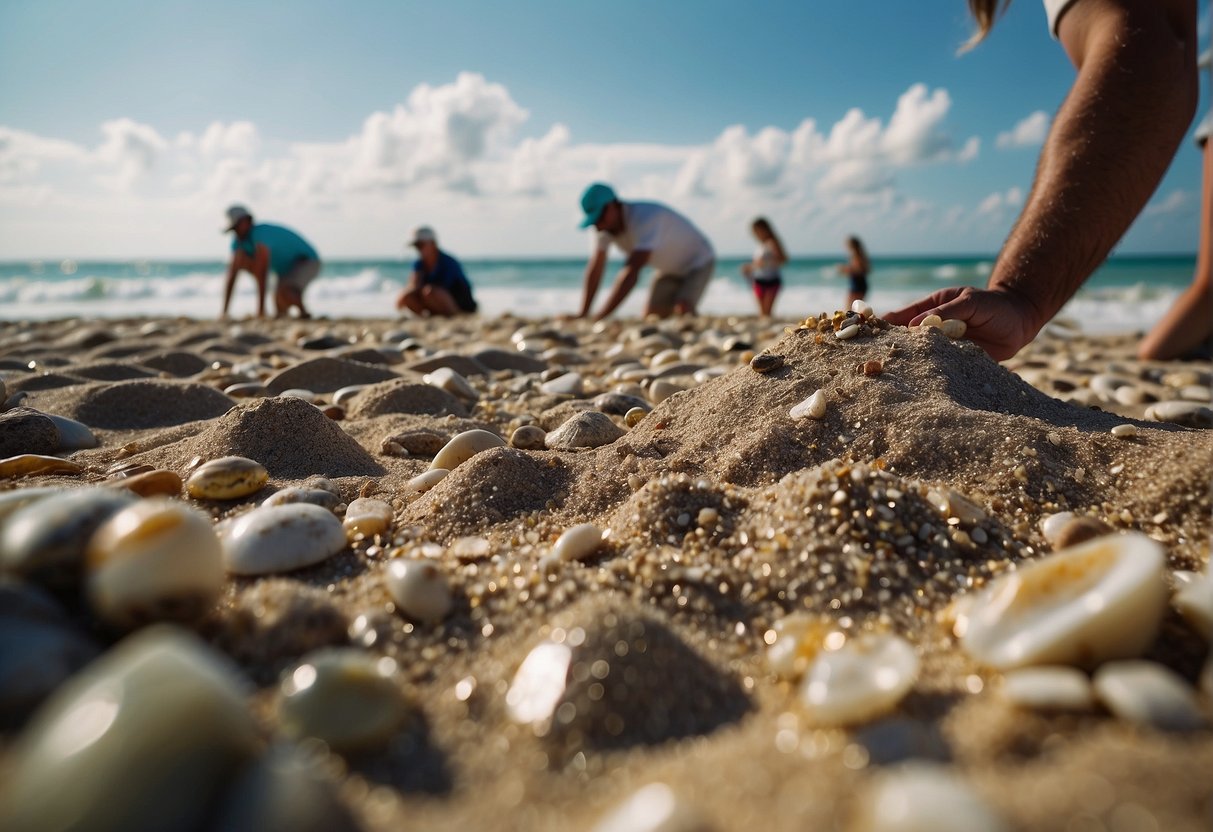
Shell Island in St. Andrews State Park, Panama City Beach is a great option if you are looking for a unique gem mining experience. The island is a seven-mile stretch of land with pristine beaches and beautiful white sand. The island is accessible only by boat, with options including the official Shuttle, private boat rentals, and water taxis.
Once you arrive at Shell Island, you’ll find a variety of gems and minerals waiting to be discovered. Some of the most commonly found gems include quartz, agate, and jasper. You can bring your own equipment or rent tools from local vendors to start mining.
It’s important to note that you’ll need to obtain a permit to mine for gems on Shell Island. You can get a permit from the Florida Department of Environmental Protection, and they’re valid for up to two weeks. Additionally, there are rules and regulations in place to protect the island’s natural resources, so be sure to follow them while mining.
Palm Beach County Parks and Beaches (Various Locations)

Palm Beach County offer a lot of great outdoor activities but you still should consider going gem mining at one of the many parks and beaches that offer this activity. Some of the top locations for gem mining in Palm Beach County include Peanut Island Park, Ocean Inlet Park, and Coral Cove Park.
At these locations, you can rent equipment and purchase bags of dirt that contain a variety of gems and minerals. You’ll then sift through the dirt using a screen and water to uncover your treasures. Some of the gems you might find include amethyst, rose quartz, and citrine.
In addition to gem mining, these parks and beaches offer a variety of other activities to enjoy. At Peanut Island Park, you can go snorkeling, kayaking, or camping. Ocean Inlet Park is a popular spot for fishing and picnicking, while Coral Cove Park is known for its beautiful beaches and excellent snorkeling opportunities.
Before heading out to one of these locations, be sure to check the park or beach’s website for hours of operation, admission fees, and any special rules or regulations. Also, keep in mind that gem mining is weather-dependent, so it’s a good idea to check the forecast before you go.
Calvert Park Fossil Site (Holmes Beach)
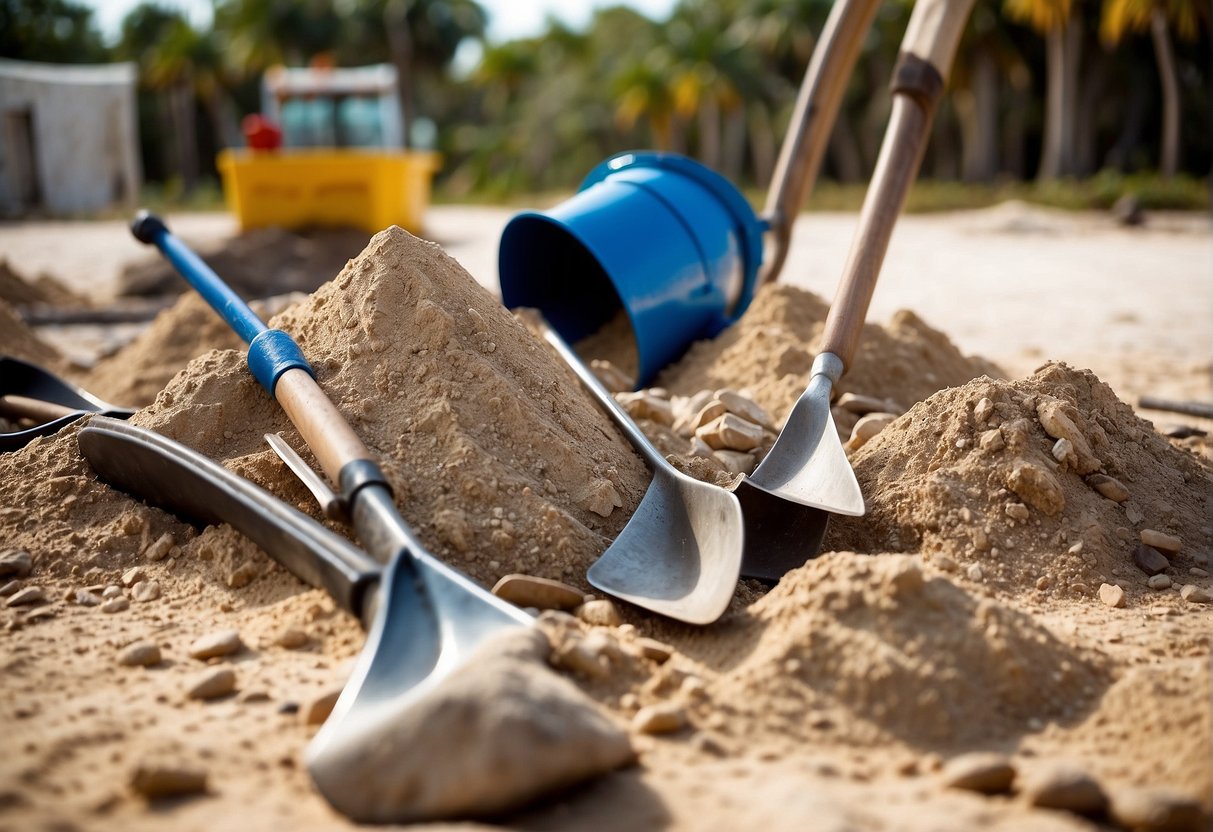
If you’re interested in fossil hunting, Calvert Park Fossil Site in Holmes Beach is a must-visit location. This site is known for its abundance of fossilized shark teeth and other marine fossils.
To access the site, you can park in the designated parking area and take a short walk to the beach. Once you arrive at the beach, you can start searching for fossils. It’s recommended that you bring a small shovel or sifter to help with your search.
The best time to search for fossils at Calvert Park Fossil Site is during low tide. This is when the most fossils are exposed and easier to find. Make sure to wear comfortable shoes and bring plenty of water, sunscreen, and insect repellent.
It’s important to note that collecting fossils at Calvert Park Fossil Site is legal, but there are limits to how many you can collect. You are only allowed to collect up to two gallons of fossils per day. Additionally, it’s important to respect the environment and not disturb any natural habitats or wildlife.
Manasota Key (Englewood)
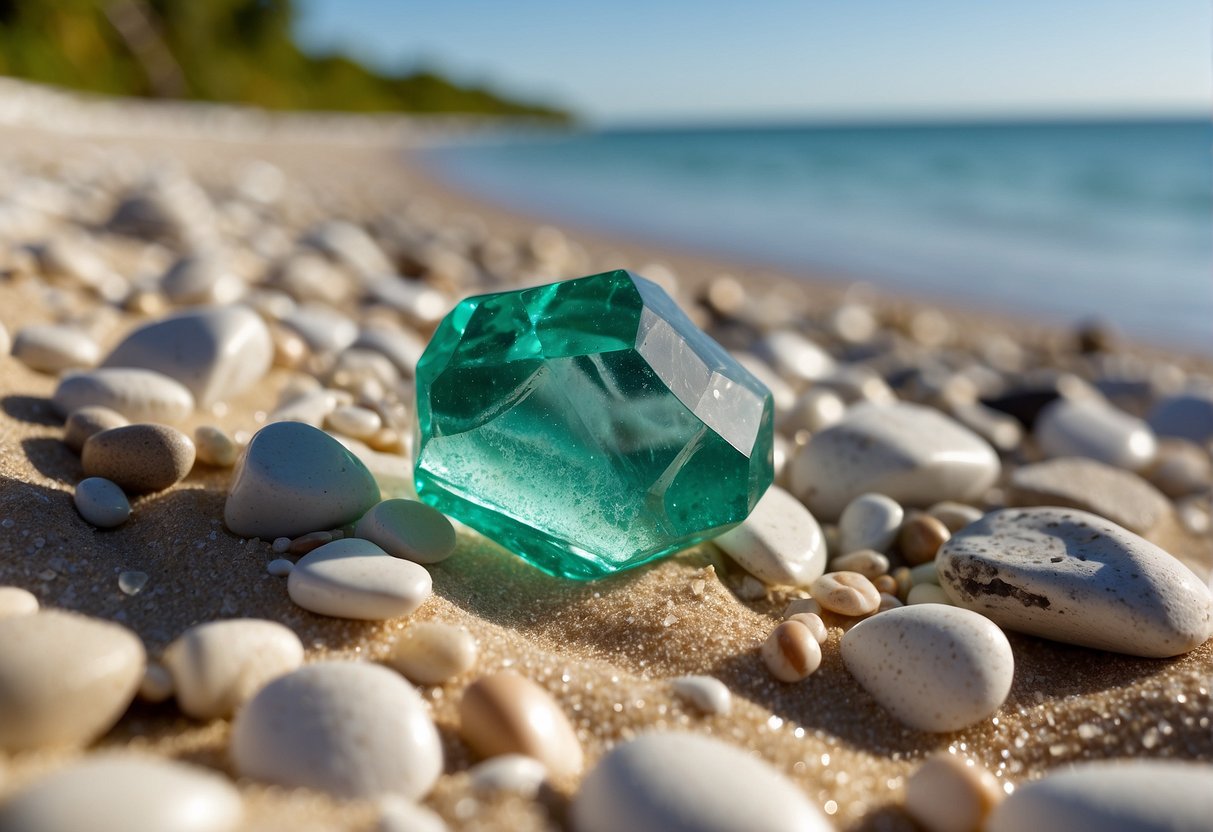
If you’re looking for a less crowded gem mining spot, Manasota Key in Englewood might be just what you need. This hidden gem is located on the southwest coast of Florida and is home to several beautiful beaches and eco-habitats.
One of the most popular activities on Manasota Key is shark tooth hunting. The beaches are famous for producing fossilized shark teeth, which can be found by sifting through the sand. You can also find other types of fossils, such as coral and manatee bones.
In addition to shark tooth hunting, there are other opportunities for gem mining on Manasota Key. You can try your luck at finding agatized coral, calcite, silicified wood, chert, flint, chalcedony, and geodes.
If you want to take a break from gem mining, there are plenty of other activities to enjoy on Manasota Key. You can explore the eco-habitats, go birdwatching, or take a kayak or paddleboard tour. There are also several restaurants and bars where you can relax and enjoy the beautiful scenery.
Amelia Island State Park (Fernandina Beach)
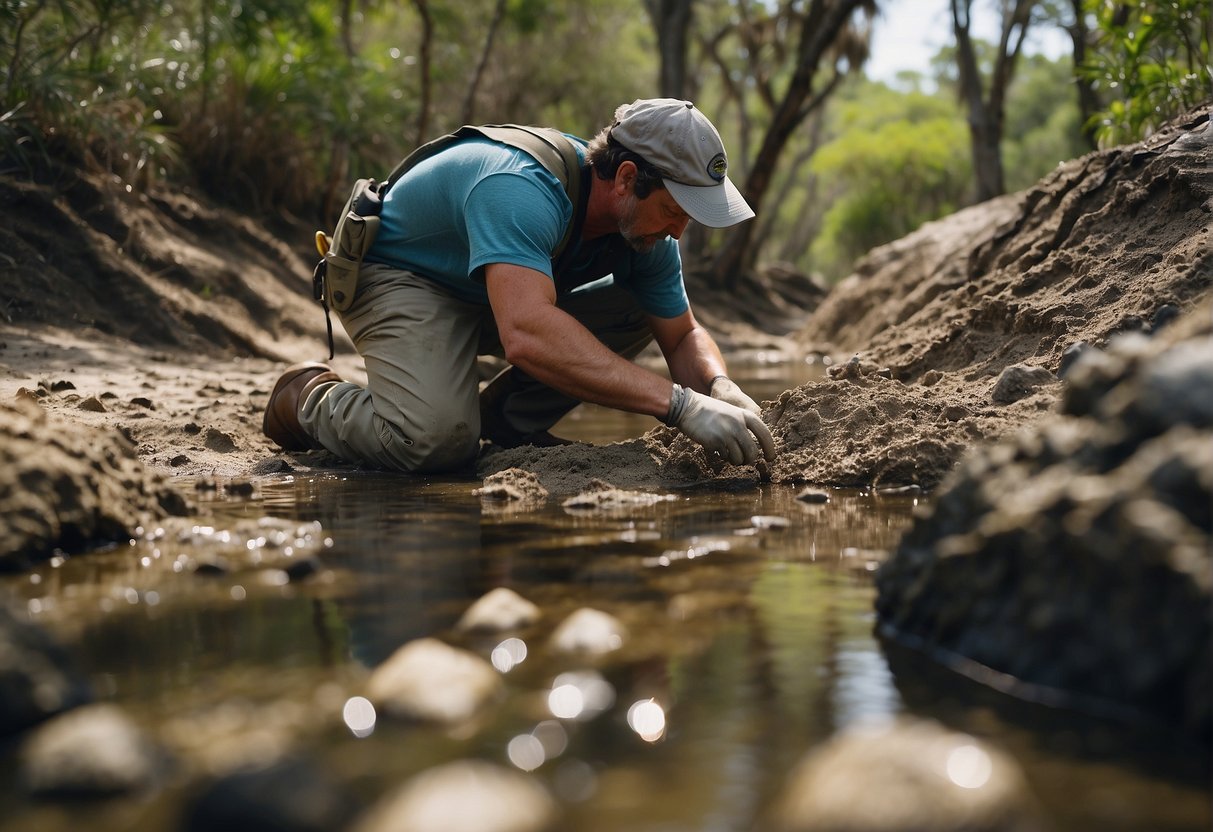
Amelia Island State Park in Fernandina Beach has a unique gem mining experience. This state park is located on the southern tip of Amelia Island and offers a variety of recreational activities, including gem mining.
At Amelia Island State Park, you can hunt for gems and minerals in the park’s designated mining area. The park provides all the necessary equipment, including screens, buckets, and shovels, and you get to keep whatever you find. The mining area is located near the beach, so you can enjoy beautiful views of the Atlantic Ocean while you search for gems.
The types of gems you can find at Amelia Island State Park include quartz, amethyst, citrine, garnet, and more. The park staff is knowledgeable about the different types of gems and minerals and can help you identify what you find.
In addition to gem mining, Amelia Island State Park offers a variety of other recreational activities, including hiking, fishing, and wildlife viewing. The park also has picnic areas, restrooms, and showers, so you can make a day of it and enjoy all the park has to offer.
Here are some key details to keep in mind if you plan to visit Amelia Island State Park for gem mining:
- The park is open from 8 a.m. until sundown, 365 days a year.
- The fee for gem mining is $6 per person, which includes all equipment and the gems you find.
- Correct change is required, so be sure to bring cash.
- The park is located at 12157 Heckscher Drive, Jacksonville, FL 32226.
- For more information, you can visit the official park website.
Ortona Shell Pit (Arcadia)
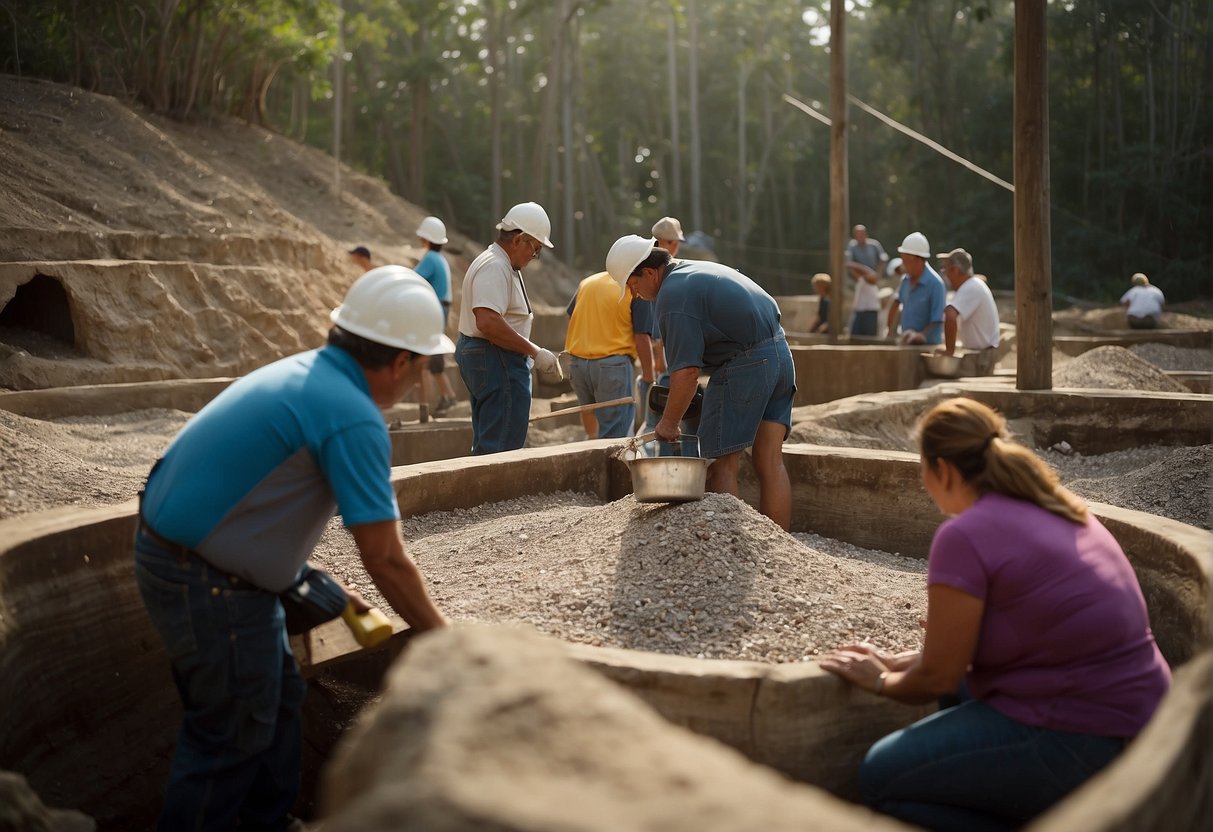
The Ortona Shell Pit is located east of Labelle, Florida, and stretches over 180 feet deep. Fascinating dredging techniques are utilized to efficiently pump from these depths to a large classifying plant. You can sift through the sand and shells to find your own treasures.
One of the best things about Ortona Shell Pit is that it’s suitable for all ages and skill levels. Whether you’re a seasoned gem miner or a first-timer, you’ll find something to enjoy here. You can bring your own tools or rent them on-site.
It’s important to note that Ortona Shell Pit is a private mine, so you’ll need to contact the owners before visiting. The mine is usually open seven days a week. Call (863) 675-6800 for more information.
| Pros | Cons |
|---|---|
| Abundance of fossilized shells and shark teeth | Private mine, need to contact owners before visiting |
| Suitable for all ages and skill levels | No guarantee of finding valuable gems |
| Bring your own tools or rent them on-site | |
| Open seven days a week |
Myakka River State Park (Sarasota)
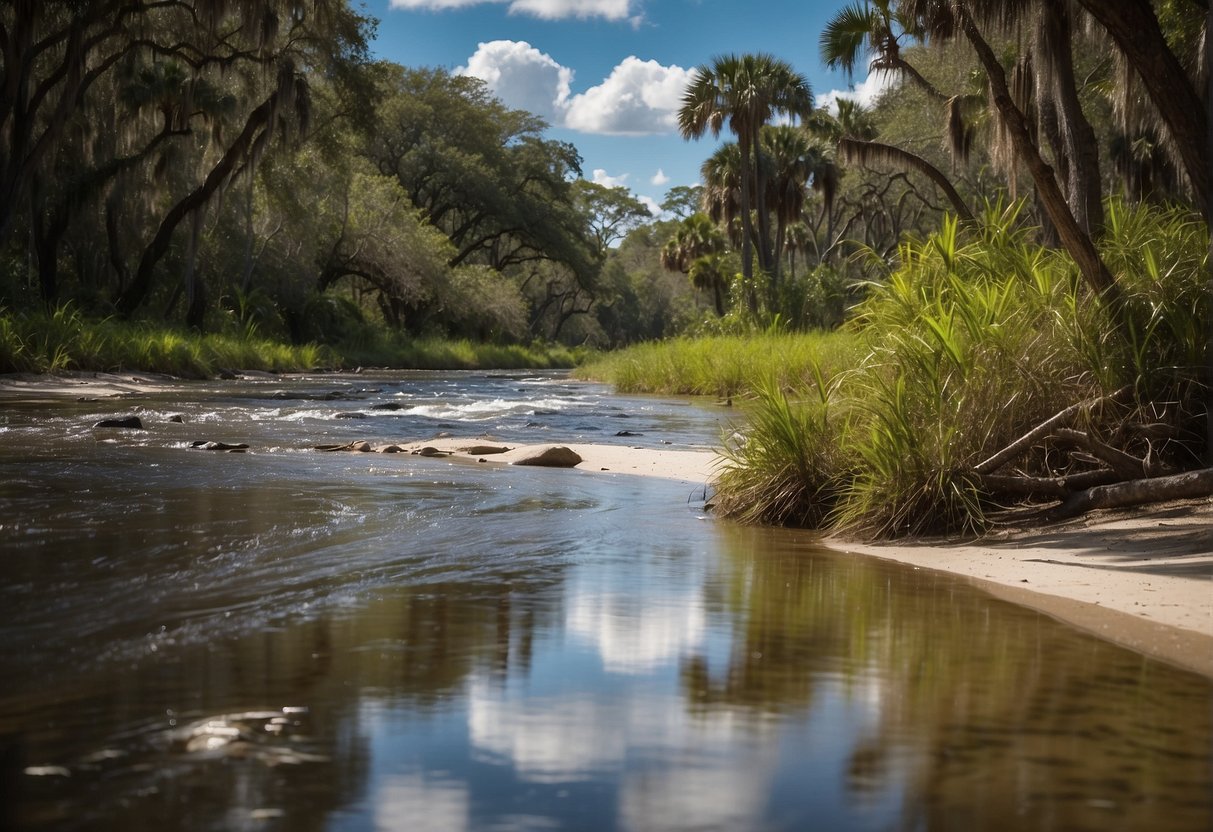
Myakka River State Park in Sarasota is an expansive park spans over 58 square miles and offers visitors a diverse range of activities and attractions to explore.
One of the best ways to experience gem mining in Myakka River State Park is by taking a guided tour. The park offers a variety of tours, including a gem mining tour where you can search for gems and minerals in the park’s rivers and streams. The tour guides will teach you about the different types of gems and minerals that can be found in the area, and help you identify any treasures you find.
In addition to gem mining, Myakka River State Park offers a wide range of activities for visitors of all ages. You can explore the park’s beautiful natural surroundings by hiking, biking, or taking a scenic drive. The park also has a variety of picnic areas, playgrounds, and campsites, making it a great spot for a family outing or a weekend getaway.
If you’re interested in wildlife viewing, Myakka River State Park is home to a variety of native Florida species, including alligators, deer, and a wide variety of birds. You can take a guided wildlife tour, or explore the park’s many hiking trails and boardwalks to see these animals in their natural habitats.
Caspersen Beach (Venice)
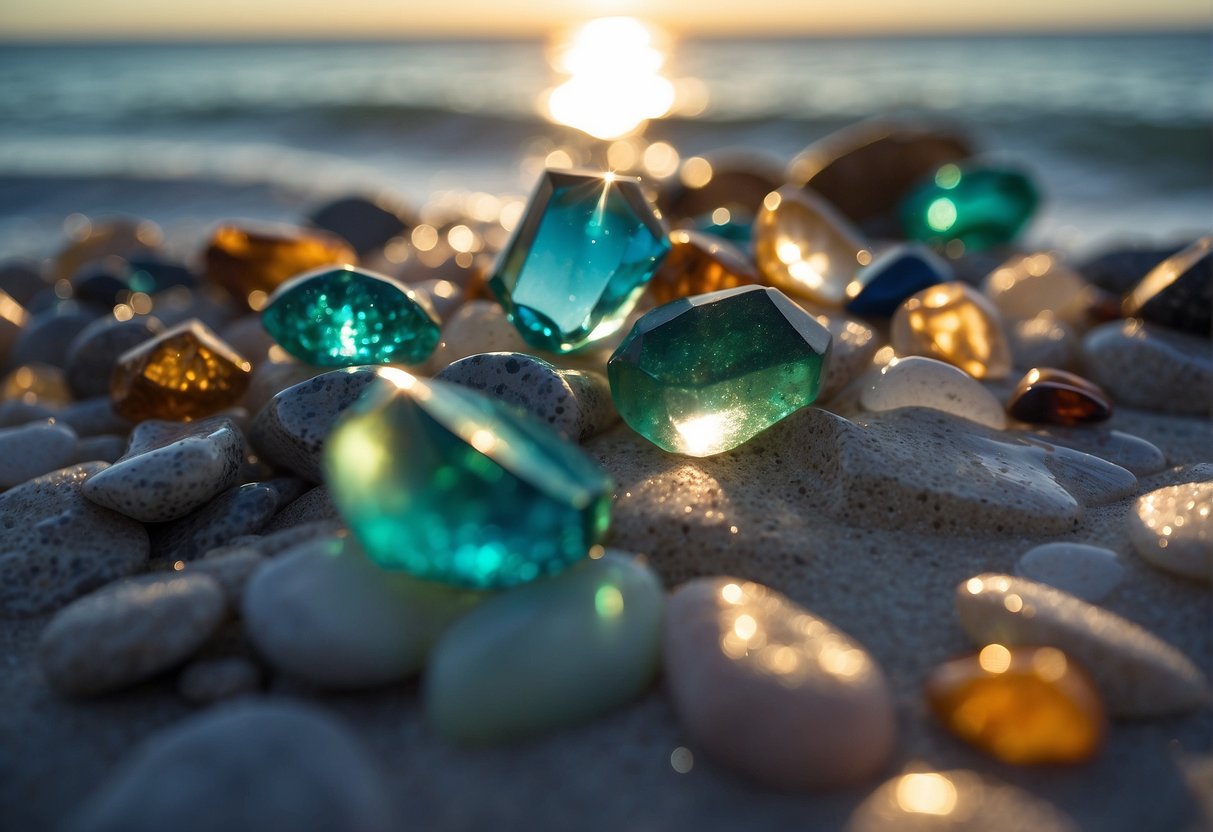
Located in Venice, Caspersen Beach is known as the Sharktooth Capitol of the World, and for good reason! You’ll find plenty of gems, shark teeth and other fossils scattered along the shoreline, making it a fun and unique activity for the whole family.
One of the best things about Caspersen Beach is that it’s free to visit. You can spend as much time as you want combing the beach for treasures without having to worry about any admission fees. Plus, the beach is open year-round, so you can visit whenever it’s convenient for you.
When you arrive at the beach, head to the south end where you’ll find the best areas for fossil hunting. Look for the dark, pebbly areas of the beach, as these tend to be the most productive. You can also try sifting through the sand with a mesh screen to find smaller fossils and gems.
While you’re at Caspersen Beach, be sure to take in the beautiful scenery. The beach is known for its stunning sunsets, so plan to stay until the end of the day for a truly memorable experience. You might even spot some dolphins or manatees swimming in the nearby waters!
Gem Hunting Techniques
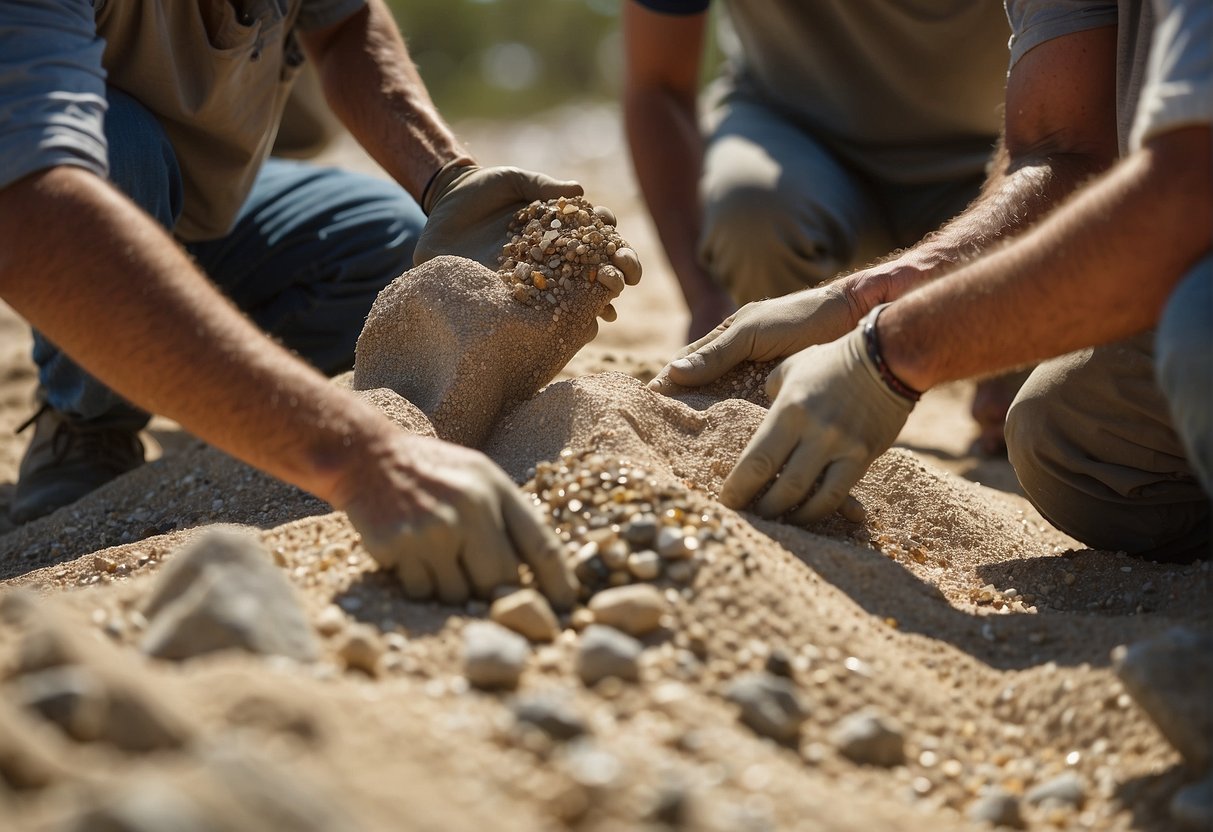
Gem hunting in Florida can be an exciting and rewarding experience. However, to be successful, you will need to use the right tools and techniques. Here are the most important gem hunting techniques that you should know before you start your next gem mining adventure:
Tools and Equipment
To get started with gem hunting, you will need some basic tools and equipment. Some of the essential tools include a shovel, a bucket, a rock hammer, chisels, and a rock screen pan. You may also want to consider investing in eye and head protection and a jeweler’s lens to help you identify gems.
It is important to choose the right tools for the job. A sturdy shovel and bucket will help you dig and transport soil and rocks, while a rock hammer and chisels will help you break open rocks to reveal hidden gems. A rock screen pan is also an essential tool that will help you sift through soil and debris to find gems.
Safety and Preparedness
Before you start your gem hunting adventure, it is important to take some safety precautions and be prepared for the unexpected. Always wear eye and head protection to protect yourself from flying debris. It is also a good idea to bring a first aid kit and plenty of water and snacks to keep you hydrated and energized.
If you are new to gem hunting, it is a good idea to go with an experienced gem hunter or join a gem hunting club. These groups can provide you with valuable tips and techniques and help you stay safe while you are out in the field.
Panning and Sifting Methods
One of the most popular gem hunting techniques is panning and sifting. To pan for gems, you will need a pan and some water. Simply scoop some soil and rocks into the pan and swirl it around in the water. The water will wash away the lighter soil and debris, leaving behind heavier rocks and gems.
Another popular technique is sifting. To sift for gems, you will need a rock screen pan. Simply pour soil and rocks onto the screen and shake it gently. The smaller soil and debris will fall through the screen, leaving behind larger rocks and gems.
Legal and Environmental Considerations
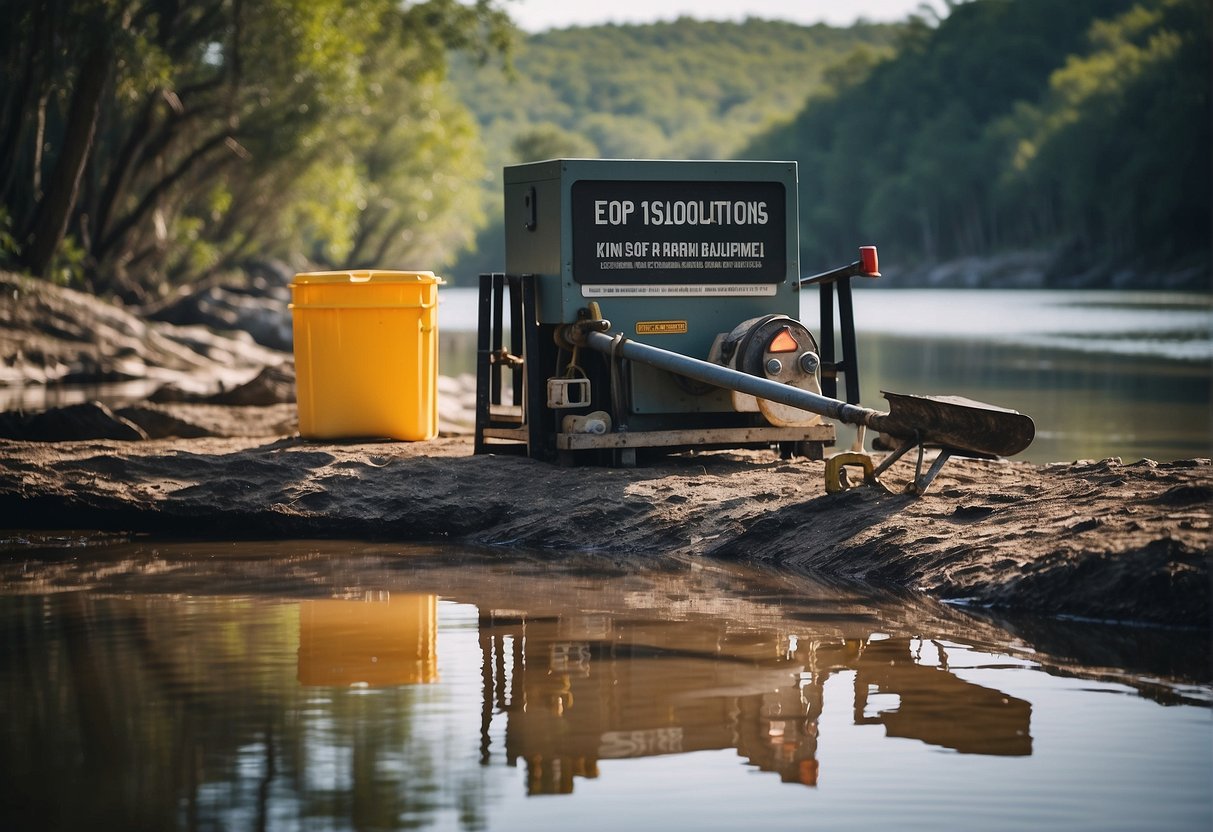
Before you can start mining for gems in Florida, you need to obtain the necessary permits and comply with state and federal regulations. The Florida Department of Environmental Protection (FDEP) is responsible for regulating mining activities in the state. You will need to apply for an Environmental Resource Permit (ERP) from the FDEP, which regulates the use of water and wetlands in the state. The FDEP also issues State 404 permits for dredging and filling activities in wetlands and other surface waters.
In addition to obtaining permits, you will need to comply with various regulations governing mining activities in Florida. For example, heavy minerals mining projects are subject to reclamation standards outlined in Part II of Chapter 211 and Part III of Chapter 378 of the Florida Statutes, as well as Chapter 62C-37 of the Florida Administrative Code. These standards require mining companies to restore mined lands to their pre-mining condition and to minimize the impact of mining activities on the environment.
Resources for Gem Hunters

Guide Books and Literature
One of the most popular guide books for gem hunters is the National Audubon Society Field Guide to Rocks and Minerals: North America. This book is an excellent resource for identifying rocks and minerals found in North America, including Florida. It provides detailed descriptions, photos, and maps to help you locate and identify gems.
Another useful book is Earth Treasures: The Southeastern Quadrant. This book is specifically focused on gems and minerals found in the southeastern region of the United States, including Florida. It provides information on where to find gems, how to identify them, and how to collect them safely and responsibly.
If you’re looking for a more comprehensive guide, you may want to check out the Southeast Treasure Hunter’s Gem & Mineral Guide. This book covers all the states in the southeastern region, including Florida, and provides detailed information on where to find gems, how to identify them, and how to collect them.
Online Forums and Updates
In addition to guide books, you can also find helpful information on online forums and updates. These resources can provide you with up-to-date information on gem hunting in Florida, including new locations, recent finds, and tips from other gem hunters.
One popular online forum is the TreasureNet forum, which has a dedicated section for gem hunting in Florida. This forum is a great place to connect with other gem hunters, share your finds, and get advice on where to look for gems.
Another useful resource is the Florida Department of Environmental Protection website. This website provides information on the regulations and permits required for gem hunting in Florida, as well as a list of designated recreational mining areas.

I am a father of a 2 energetic boys. If one of them accidently sleeps past 6am, the other one make sure he will wake up. Traveling is our favorite activity as a family and we try to do it almost every time school is out. Our favorite location is Florida (coming from Baltimore the warm weather is usually a blessing).
